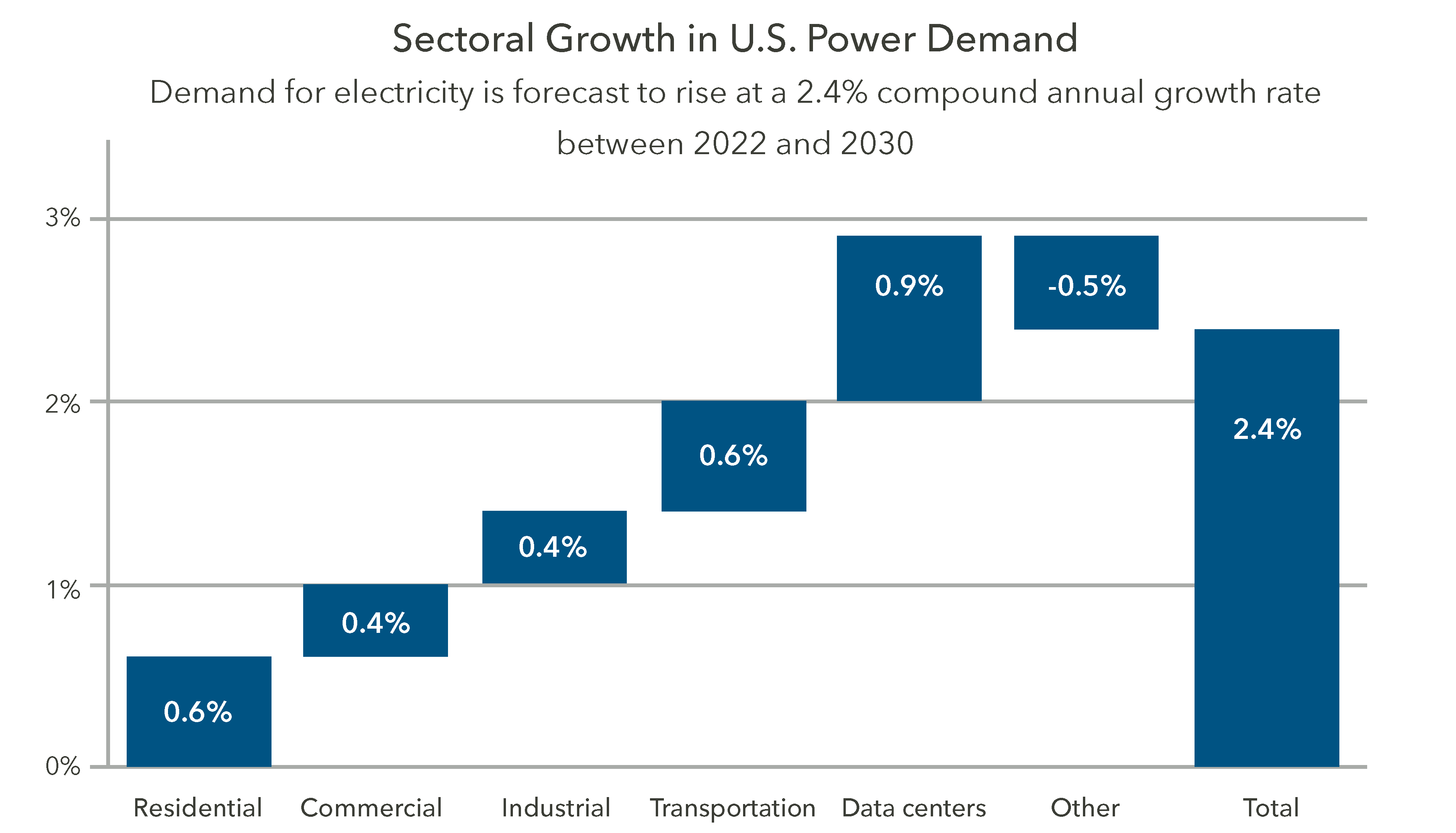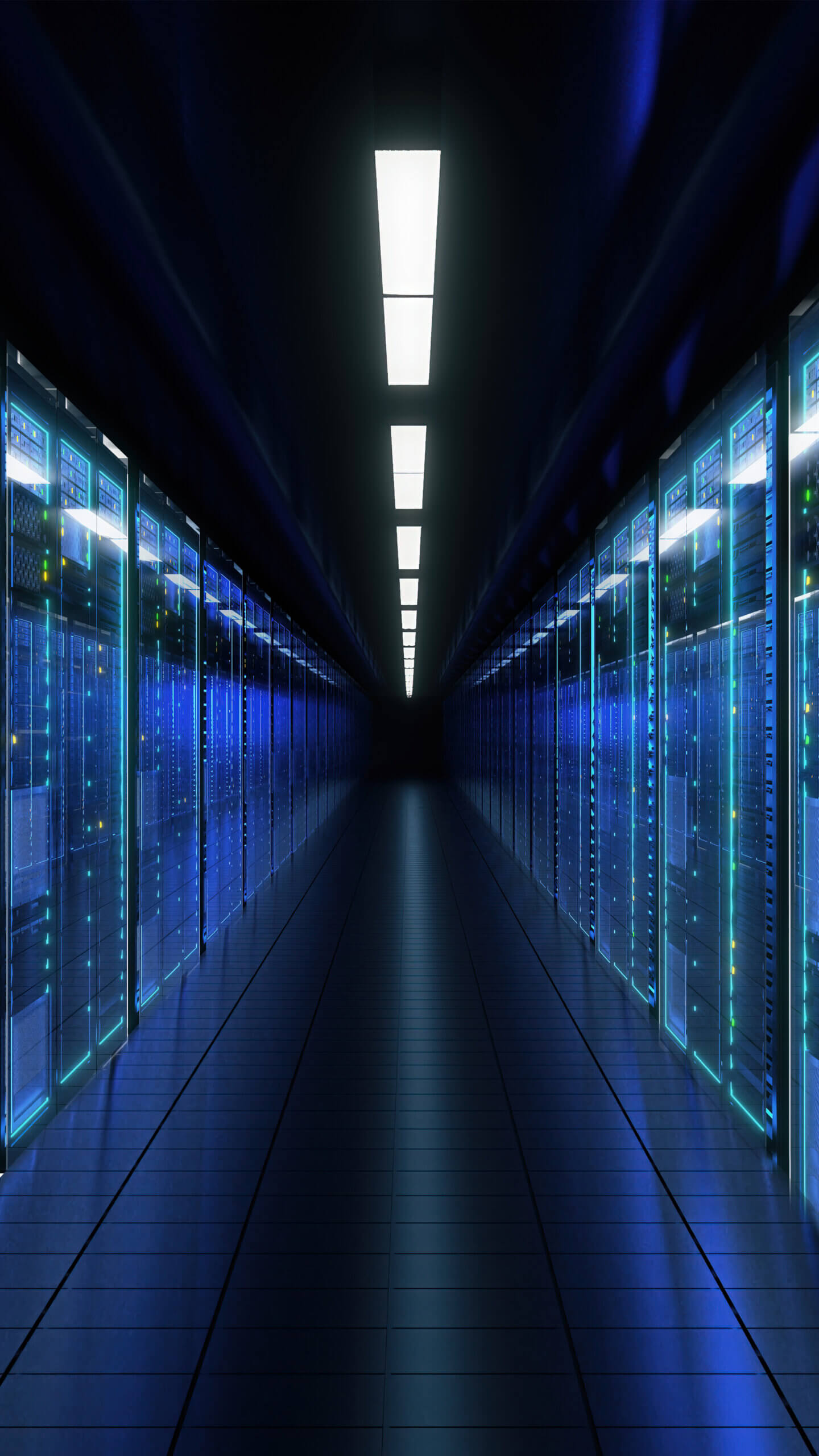Meeting Unprecedented Need with Cutting-Edge Solutions
How Co-Located Renewable Systems Can Power the AI Revolution
The United States stands at a critical inflection point in its energy history.
Digitalization and the growing adoption of artificial intelligence (AI) are driving unprecedented levels of demand for data centers. Data centers, in turn, could bring about as much as 63 GW of new capacity needs by 2030—a 160% increase from the current level, per Goldman Sachs.
This surge arrives at a complicated time, as transmission constraints plague an aging grid and interconnection timelines stretch to record lengths—but this increase also represents an extraordinary opportunity to transform America’s energy economy and maintain an economic and strategic competitiveness.
Expediting “Time to Power”
Power availability has become a crucial consideration when siting data centers, which often call for over a gigawatt of capacity. Limited transmission availability and lengthy interconnection processes are hampering the growth of new domestic energy generation—in two decades, the average timeline from initial connection request to facility operations has more than doubled from less than two years to now more than four years, according to the Lawrence Berkeley National Laboratory (Berkeley Lab). Further, projects are often allocated costly transmission upgrades that can delay or even prevent projects from coming online as they wait for those improvements to be completed.
Against this backdrop of constrained supply, increasing demand—from not only data centers, but also industrial reshoring and electrification—places additional strain on this system, forcing companies to seek innovative approaches to meet their power needs. For these businesses, the timeline, cost, and sustainability of scaling their operations are top of mind.
Harnessing Energy Stacking
Most utility-scale power plants employ traditional, front-of-the-meter grid connection: power is produced, supplied to the grid, and then purchased by an electricity consumer such as a utility or corporate power buyer. But the urgency, scale, and reliability needs of new data centers render this traditional approach far too time-consuming and costly.
Co-located systems can bypass current bottlenecks: by siting data centers behind a power plant’s meter, generation facilities can directly supply data centers with electricity, sidestepping grid constraints and delivering the quickest time-to-power solution on the market.
The race to build the infrastructure of tomorrow’s AI-powered economy has begun.
Readily deployable renewable energy is an essential part of a timely and clean solution. By stacking co-located technologies—think wind, solar, and energy storage, paired with supplementary grid interconnection—companies gain the combined attributes of a diversified mix. Battery storage and grid interconnection support the reliability of the system, and the complementary nature of wind and solar generation provides the cleanest and most expedient solution currently possible for sustainability-minded customers.
The coordination of these technologies can be optimized for specific geographical locations and requirements, helping advance each data center’s goals, whether to maximize its firm capacity or its renewable matching percentage. In many regions of the United States, properly balanced wind and solar installations can generate over 80% of the electricity needs of a data center, significantly reducing its footprint while, when combined with supplementary grid interconnection, maintaining the uptime that is critical to its operation.

Data Source: Goldman Sachs Research, EIA
text continued
Unlocking Gridlocked Potential
Co-location also creates the opportunity to take advantage of renewable energy resources that are shovel-ready but hindered by transmission challenges. According to the Berkeley Lab, currently more than 1,360 GW of wind and solar capacity is stuck in interconnection queues. Most of these projects have been under development for several years and could provide more than enough power to cover even the most aggressive forecasts for demand growth.
This untapped potential represents the fastest timeline to power large loads. With no need for grid interconnection, the main barrier to these projects’ construction is lifted—allowing power plants and data centers alike to come online as quickly as possible. Since certain facilities will be shared by the co-located projects, optimized procurement can shorten the process even further—for instance, by avoiding equipment with long lead times like high-voltage transformers and breakers—leading to project cost savings.
The scale of electricity required by data centers dictates that businesses must consider how a facility will be powered as they determine where to site it. By building co-located energy systems, companies not only secure reliable power at predictable costs but position themselves to lead in an economy where energy strategy directly impacts competitive advantage.
The Renewable Advantage
Unlocking these renewable assets not only addresses the immediate need for power but also provides strategic business benefits that extend beyond accelerated timelines.
The forecasted growth in power demand is certain to create competition between manufacturing, data centers, vehicle electrification, and other needs. Companies can leverage innovative energy generation plans as an asset to strengthen their position in an increasingly contested market.
Behind-the-meter generation also enables data centers to manage their load in a predictable manner based on wind and solar production forecasts. This allows companies to optimize load to generation and significantly reduce their emissions.
Finally, co-location fosters social resilience and energy independence. Rather than drawing from existing generation facilities, co-located systems add entirely new capacity to the grid, ensuring that everyday ratepayers aren’t burdened by increased demand and infrastructure costs.
In the event of an emergency, data centers are insulated from the supply fluctuations of the grid and can even help support its needs, providing greater stability to the whole power system. With a system that’s oversize relative to load capacity—in other words, has extra generation built into it for resiliency purposes—excess energy can be sold back to the grid for profit on a recurring basis. Ultimately, co-located renewables provide the ability to scale in alignment with business objectives rather than interconnection availability, further reducing exposure to risk.
A New Paradigm for Growth
Investment in data centers is expected to grow to $150 billion by 2028. The companies that will lead this next wave of innovation will not just be those with the most advanced algorithms or processing power, but those that effectively solve their energy equation.
Co-locating data centers and renewable energy systems represents more than a solution to grid constraints: it embodies a fundamental rethinking of how critical infrastructure can be powered in an age of unprecedented demand. With a successful track record of developing and commercializing such facilities, the proven capabilities to execute a development services agreement for industrial loads, and a portfolio of more than 60 GW of wind, solar, and storage projects across the United States, Apex is uniquely positioned to deliver solutions that meet the scale and urgency of this new demand.
The race to build the infrastructure of tomorrow’s AI-powered economy has begun. In this competitive landscape, by working with a partner like Apex that combines development, interconnection, procurement, construction, and operations expertise to provide a turnkey solution, forward-
thinking businesses can take control over their energy needs and ensure that their cost, generation, and sustainability goals are met.


